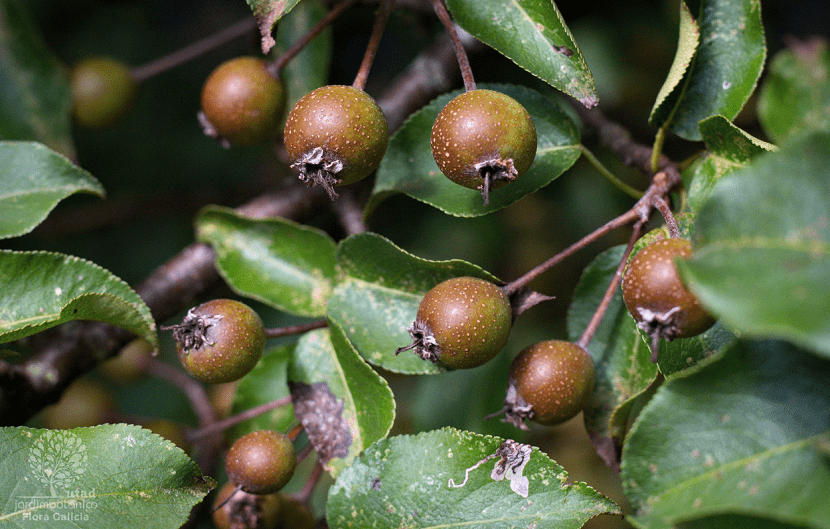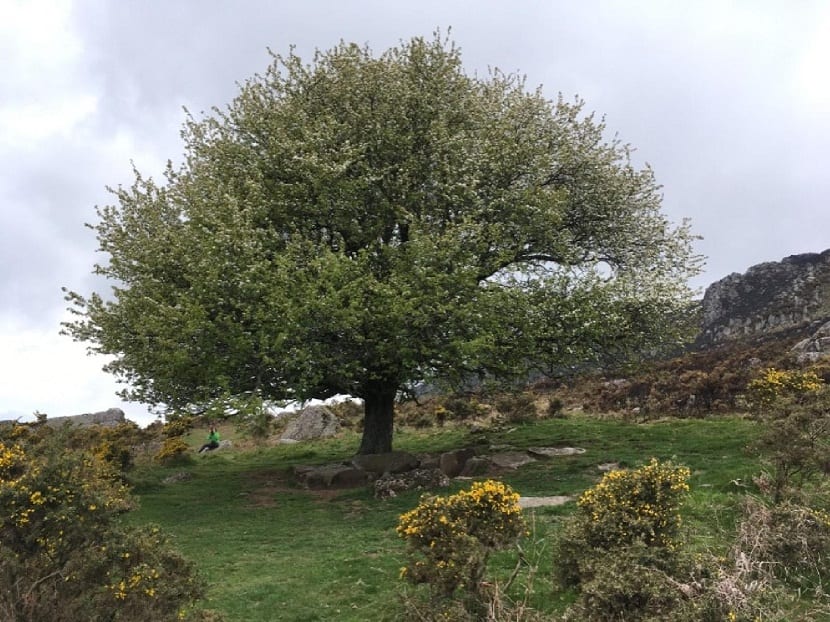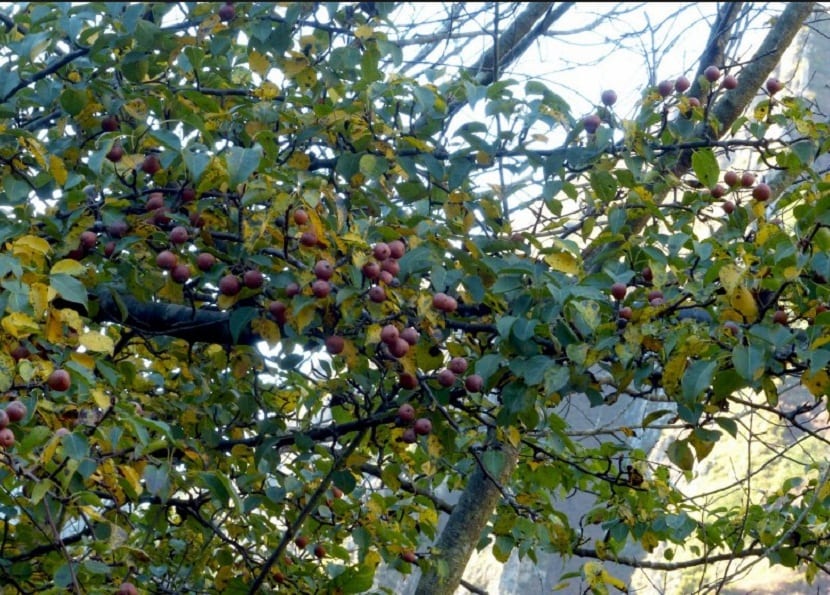
El Pyrus cordata or Atlantic wild pear They belong to the rose family (Rosaceae), an amygdaloid subfamily, as are the apple and quince.
The genus Pyrus is composed of about 22 species found in Asia, Europe and North Africa, one of them being the Pyrus cordata, a small evergreen tree, also known as wild pear, being this very frequent in areas with bushes.
Characteristics of the Pyrus cordata

El Pyrus cordata It is a small tree with characteristics similar to Bourgaean Pyrus which it can reach 3 to 5 meters in height, although in appropriate environments it can grow much larger. It has a fairly strong and flexible trunk, with a grayish-brown bark with a cracked appearance.
With thorny branches and deciduous leaves in the shape of a heart at its base from 2,5 to 3,5 cm in its extension, oval, pointed and alternately arranged. The leaves have hairs when they sprout, but they progressively lose them and when they mature they do not present hairs. The species is hermaphroditic, since it has male and female organs, pollination occurs thanks to the intervention of insects.
Flowering
Its flowering occurs between the months of April and MayIts flowers with small petals are white and are arranged almost at the same height. The fruits of this plant are small from 1 to 1,5 cm and are reddish in color.
The Atlantic wild pear grows in heavy clay soils, in sunny areas on the edge of forests or in hedges. Its strength makes it tolerate air pollution; extreme humidity and various types of soil, as long as they are discreetly fruitful; places with light shade and drought. It lives at different heights, from sea level to approximately 1500 meters of altitude.
From
This plant is native to central and eastern Europe, although it also occurs in the southwestern part of Asia. For being a strong, multi-rooted treeIt is found throughout eastern, central and western Europe, especially in the Atlantic and subatlantic area between the Basque Country and Brittany.
Its cultivation and care
Sowing of wild pear is recommended when the seed is ripe in the fall season; its germination occurs during the winter. For their best planting, the seedlings should be cut and sow them in individual containers, once they reach a suitable size to be handled, they proceed to sow preferably in a cold environment with light shade where they will remain for a year.
Its final planting will take place in the spring or early summer of the following year. The seeds of Pyrus cordata they are not very frequent, hence they are quite scarce, which has led to the need for a plant recovery and conservation program.
Uses

This species has no major application. However, it is used as grafting of other species of pear trees (siendo important to know when to perform the graft), both European and Asian, to obtain more productive hybrids whose roots have a greater absorption.
Threats
This is a species that has tolerated intense climatic changes and the suppression of hedges, which undoubtedly exposes it to diseases that can endanger the survival of this plant. Therefore, it has become an object of work and effort for the sake of its conservation and propagation because it represents a unique and scarce genetic resource. This plant offers a good hybridization with other species of pears from which a good result is expected.
This tree is part of the extensive family Rosaceae, with more than 2.500 species and more than 90 genera, the representation of the roses Rosaceae is one of the most important families of angiosperms. Yes OK its classification continues to be the subject of discussion, the taxonomy usually corresponds to four subfamilies based especially on the type of fruit in question, either with drupes (fleshy stone fruits), with fruits in which the floral hypanthium becomes fleshy) or with follicles (dried fruits that they open on one side.